Dell FX2 Server Review: A Closer Look
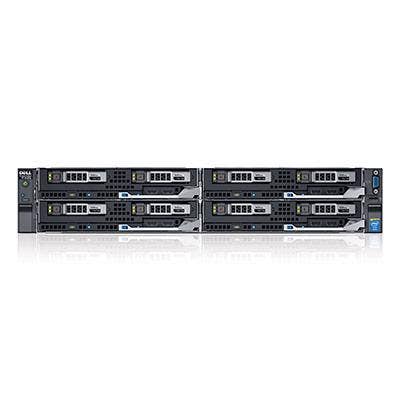
FX2 Under The Microscope
Dell's FX2 servers are based on the Power Edge platform, blending compute, networking and storage in a 2U chassis. It represents Dell's head-first leap into the converged IT space. The FX2 is a versatile platform that allows users to configure the server to run a broad range of workloads.
The beauty of the FX2 is not just its flexibility to simultaneously run different jobs, but also its modular nature, allowing whatever is run inside the chassis to share networking, power, cooling and management software.
Dell partners say they love it because the FX2 has a small 2U chassis, making it an easier sell to customers who don't want to bite off more server than they can chew. The FX2, they say, requires a lower capital expenditure compared with similarly configured clustered servers.
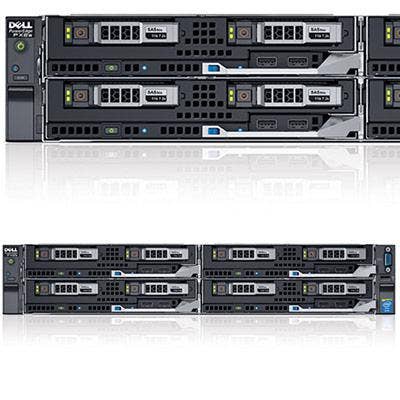
Closeup
The approach to the FX2 platform is centered on a 2U chassis that can be configured with a range of modules (also called sleds) with which users can fill it. The chassis can be filled with a choice of sled modules, each optimized for just about anything users want to throw at it -- Web hosting, virtualization, direct-attached storage or running databases.
The beauty of the FX2 is that customers can adopt a building-block approach to their infrastructure. For example, the PowerEdge FM120, which includes four separate Atom-based microservers in a single module, delivers a super-dense server configuration. The PowerEdge FC-630 is another option that delivers a server packing an Intel Xeon E5-2600 v3 that fits into a half-width, full-height sled. Users can fit four of these sleds into one FX2 2U enclosure.
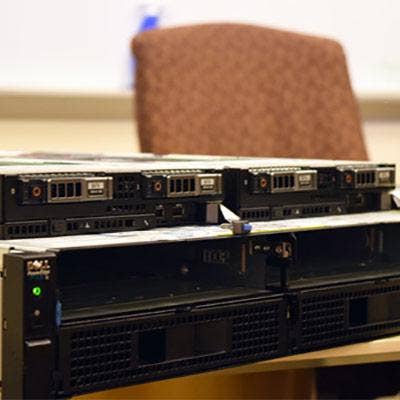
Sleds
Dell unveiled the FX2 platform in November, billing it as a new line of attack for its PowerEdge server family and its converged infrastructure strategy. Since then, Dell has rolled concurrent FX2 SKUs including PowerEdge models that give customers a la carte compute options ranging from full-width, half-width and quarter-width modules. It's that type of customization, according to Dell partners, that allows customers to dial up and down performance and density based on an application's demand and business demand.
First Dell rolled out the FX2 FC630 and then the PowerEdge FM120 outlined in the previous slide. Later Dell introduced the FC430 along with an FD332 storage sled that can hold up to 16 drives per module. When paired with four FC430 quarter-width nodes (each of which is a two-socket Xeon server), the combined solution delivers a whopping 80 server nodes per rack.
More recently Dell introduced the FC830, which is a new four-socket full-width node for compute-intensive workloads. This product is based on the newest Intel Xeon E5-4600 v3 processor with from four to 18 cores per CPU.
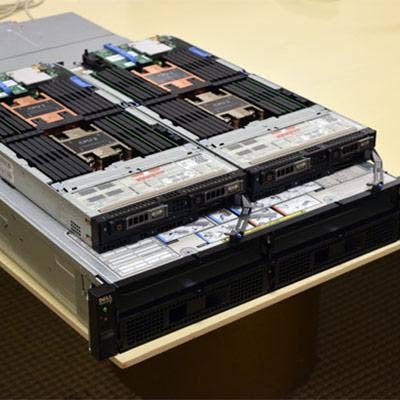
Nodes
Dell's FX2 with the PowerEdge FC630 pack impressive power. The PowerEdge FC630 combination packs four physical nodes into a single 2U rack-mount space. Nodes come in quarter-width, half-width and full-width sizes.
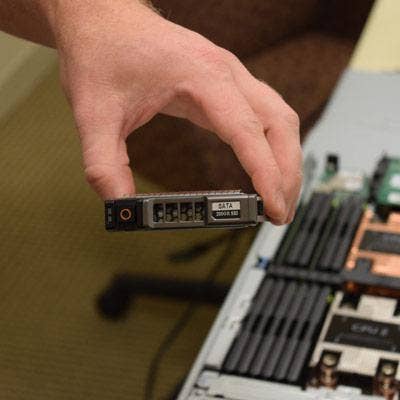
SATA
Storage options include two 2.5-inch drives or up to eight 1.8-inch SSDs. Configuration options also include the PowerEdge Express Flash NVMe PCIe SSDs for high-end disk speed requirements.
"Dell is ahead of its time in terms of modularity," said Patrick Moorhead, president and principal analyst of Moor Insights and Strategy. "It brings server, storage and networking together that allows the optimization of different workloads ranging from legacy to modern applications," he said.
With the FX2, a storage sled can be configured as direct-attached storage for one of the servers or it can be configured to perform as networked storage.
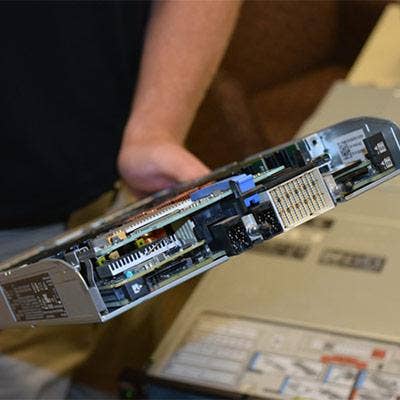
Networking
One key feature of Dell's converged platform is the use of internal networking to remove the need for an external switch and cabling. The network provides four connections per half-width compute sled that utilize Dell's use of LAN on Motherboard.
FX2 also provides a choice of network connectivity options at the rear of the enclosure, supporting a maximum of two PowerEdge FN I/O aggregator modules. Inside the chassis, the FX2 has a passive mid-plane supporting an eight PCI Express adapter configuration that links compute nodes with storage sleds.
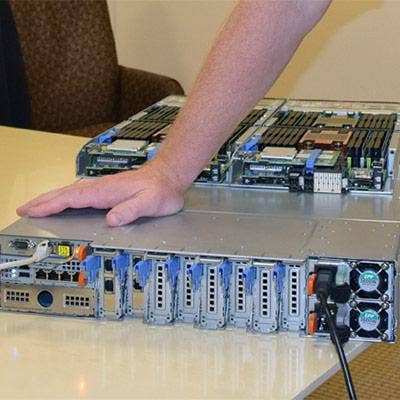
Chassis
In keeping with the modularity of the FX2, the rear of the enclosure also can be custom-configured. That includes redundant power supplies, I/O modules and chassis management controllers.
With eight 10-Gbps ports and optional Fibre Channel, the FX2's FN I/O Aggregator can handle traffic within the chassis and prime it for outside consumption.
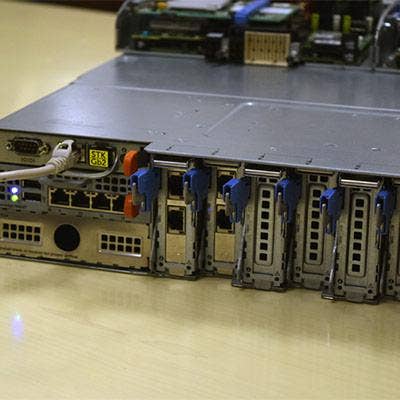
CMC
The Chassis Management Controller provides two Ethernet connections via a module that plugs into the rear of the FX2. One of the two Ethernet ports makes it possible to daisy-chain multiple FX2 chassis together without the need for an external switch. The Chassis Management Controller also includes a DB-9 serial connector.
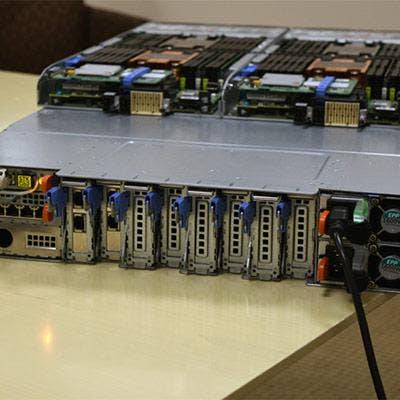
PCIe Slots
The FX2 can be outfitted with a chassis option of eight PCIe slots. However, while the original chassis configuration of four FM120 sleds was not compatible with a PCIe-enabled chassis, Dell has recently released quarter-width and full-width servers and a half-width FD332 storage block.
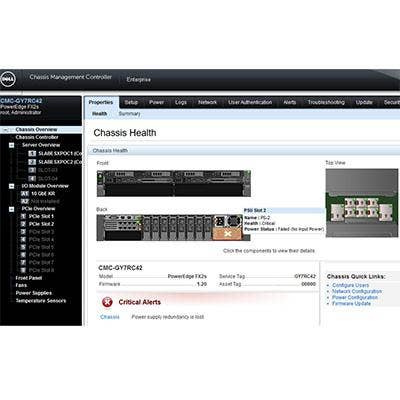
Power Failure
Dell said it engineered its PowerEdge FX2 so it can be managed using its standard iDRAC8 tools and a new version of Dell's Open Manager Essentials. Each node, Dell added, has an integrated Dell Remote Access Controller, identical to Dell's existing PowerEdge hardware.
This allows FX2 to be managed using familiar and easy-to-use Dell tools such as Dell's Active System Manager and its Chassis Management Controller.
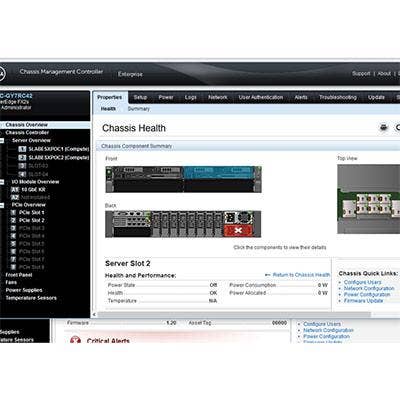
Dashboard
Here is a second look at the Dell FX2 management dashboard.
Dell partners note that the FX2's usability tweaks give it an edge over competing blade offerings. One such feature captures a video of a device's boot sequence within the server's Chassis Management Controller dashboard. This gives spotting boot sequence errors as easy as playing back a video.
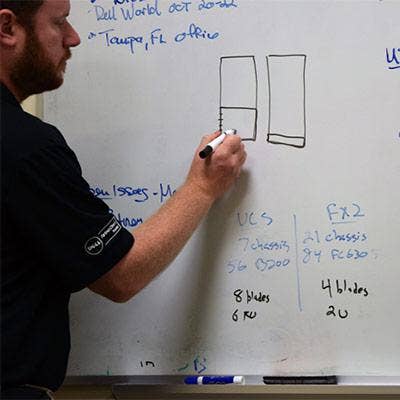
Density
Dell FX2 is denser, has a smaller footprint and has lower cooling costs when compared with Cisco UCS, said Rick Gouin (pictured here), chief technology officer for solution provider Winslow Technology Group. "If you are leasing racks at a co-location facility, density matters. If you are growing your data center and you don't want to knock down walls to grow, density matters," Gouin said.
He said a comparable Cisco UCS system has a footprint of 6U with an eight-blade capacity. That allows a standard rack to support seven chassis. Dell's FX2 FC630 is a 2U form factor supporting four blades each with one rack capacity of 21 chassis. That's a 56 to 84 blade differential, allowing a Dell data center to squeeze 28 more blades per rack, according to Gouin.